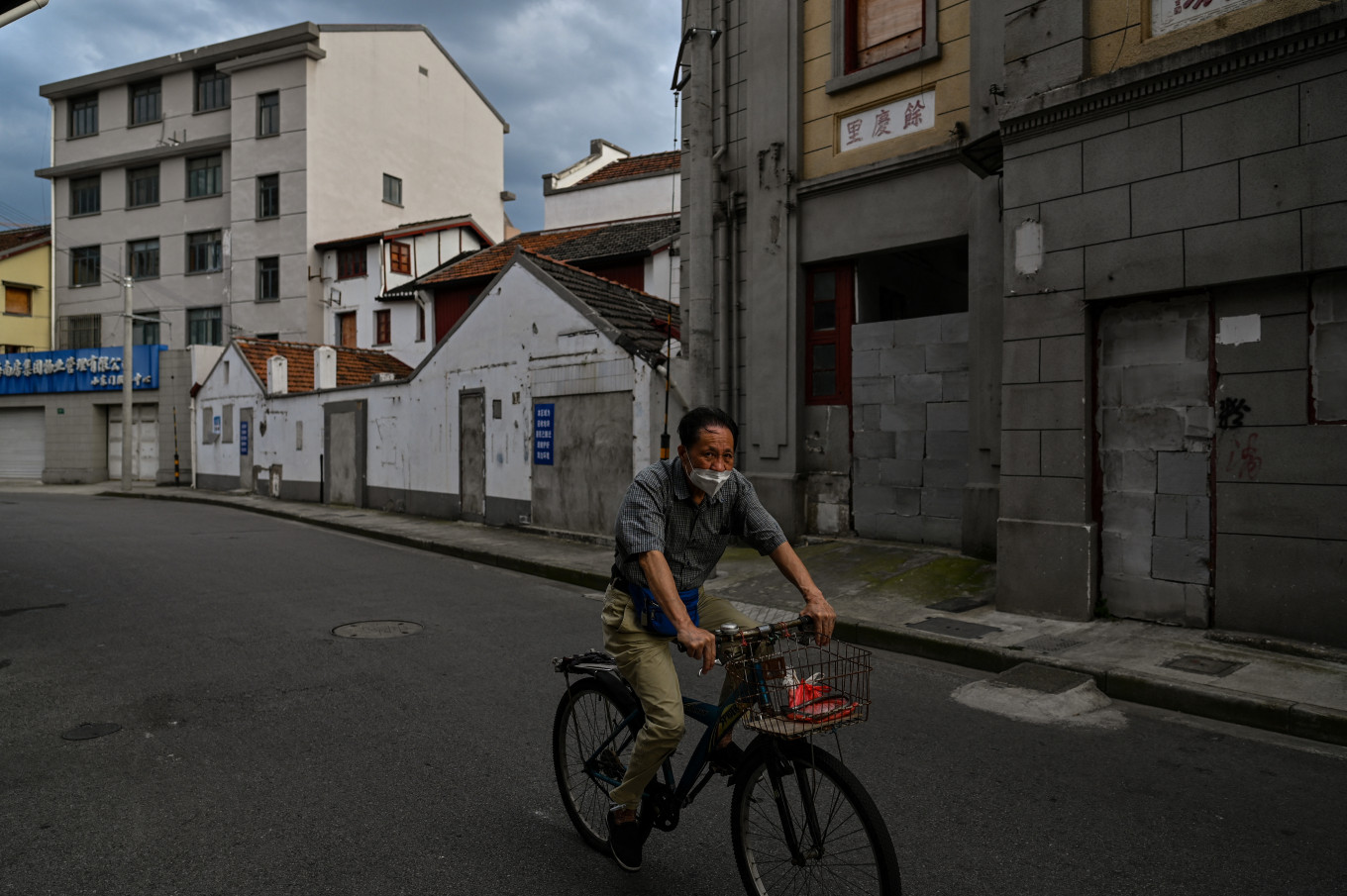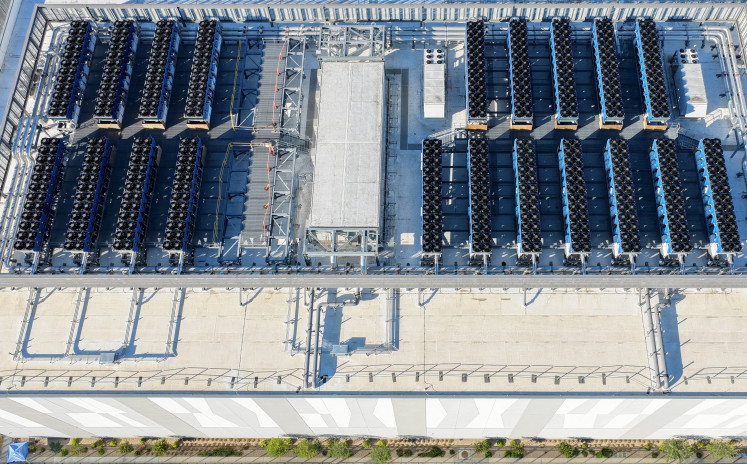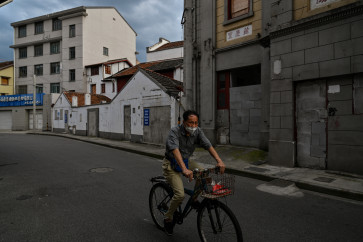Popular Reads
Top Results
Can't find what you're looking for?
View all search resultsPopular Reads
Top Results
Can't find what you're looking for?
View all search resultsDemolition looms for historic Shanghai neighborhood
Change text size
Gift Premium Articles
to Anyone
 This photo taken on June 22, 2022 shows a man riding a bicycle past sealed buildings marked for demolition in the Laoximen neighborhood of Shanghai's Huangpu district. Bricked-up doorways, crumbling facades, and a small group of defiant locals: one of Shanghai's oldest neighborhoods is barely clinging to life as the city presses ahead with demolition and redevelopment plans
(AFP/Hector Retamal)
This photo taken on June 22, 2022 shows a man riding a bicycle past sealed buildings marked for demolition in the Laoximen neighborhood of Shanghai's Huangpu district. Bricked-up doorways, crumbling facades, and a small group of defiant locals: one of Shanghai's oldest neighborhoods is barely clinging to life as the city presses ahead with demolition and redevelopment plans
(AFP/Hector Retamal)
B
ricked-up doorways, crumbling facades and a small group of defiant locals: one of Shanghai's oldest neighborhoods is barely clinging to life as the city presses ahead with demolition and redevelopment plans.
Laoximen or "old West Gate" -- named for its position in Shanghai's 16th-century defensive walls -- was once the city's cultural centre.
Built around the site of a Confucian temple, the mostly two- and three-storey buildings of stone and wood are an anachronism at the heart of Shanghai's gleaming commercial district.
Thousands of residents -- a mix of old Shanghai families and migrant workers drawn to the low rent -- were ordered to leave their homes at the end of 2017, though some have clung to the ageing buildings for years after the deadline.
Yang, who declined to give his full name, is one of the last residents who has resisted compensation from the government and held onto his home in Laoximen, a damp labyrinth of long corridors stacked with old furniture and household appliances.
"This piece of land was bought by my grandfather," Yang, whose family has lived in the area since before the Communist Party took power in 1949, told AFP.
Most of his neighbors have agreed to leave, but Yang is holding out for what he says is compensation that would match "the value of the house".







![Let it out: Japanese rocker Hyde holds a solo concert, billed as the Hyde [Inside] Live 2025 World Tour in Jakarta, on Nov. 1, 2025, at Tennis Indoor Senayan in Central Jakarta.
(Courtesy of Sound Rhythm and Mataloka Live)](https://img.jakpost.net/c/2025/11/05/2025_11_05_168574_1762306300._medium.jpg)










